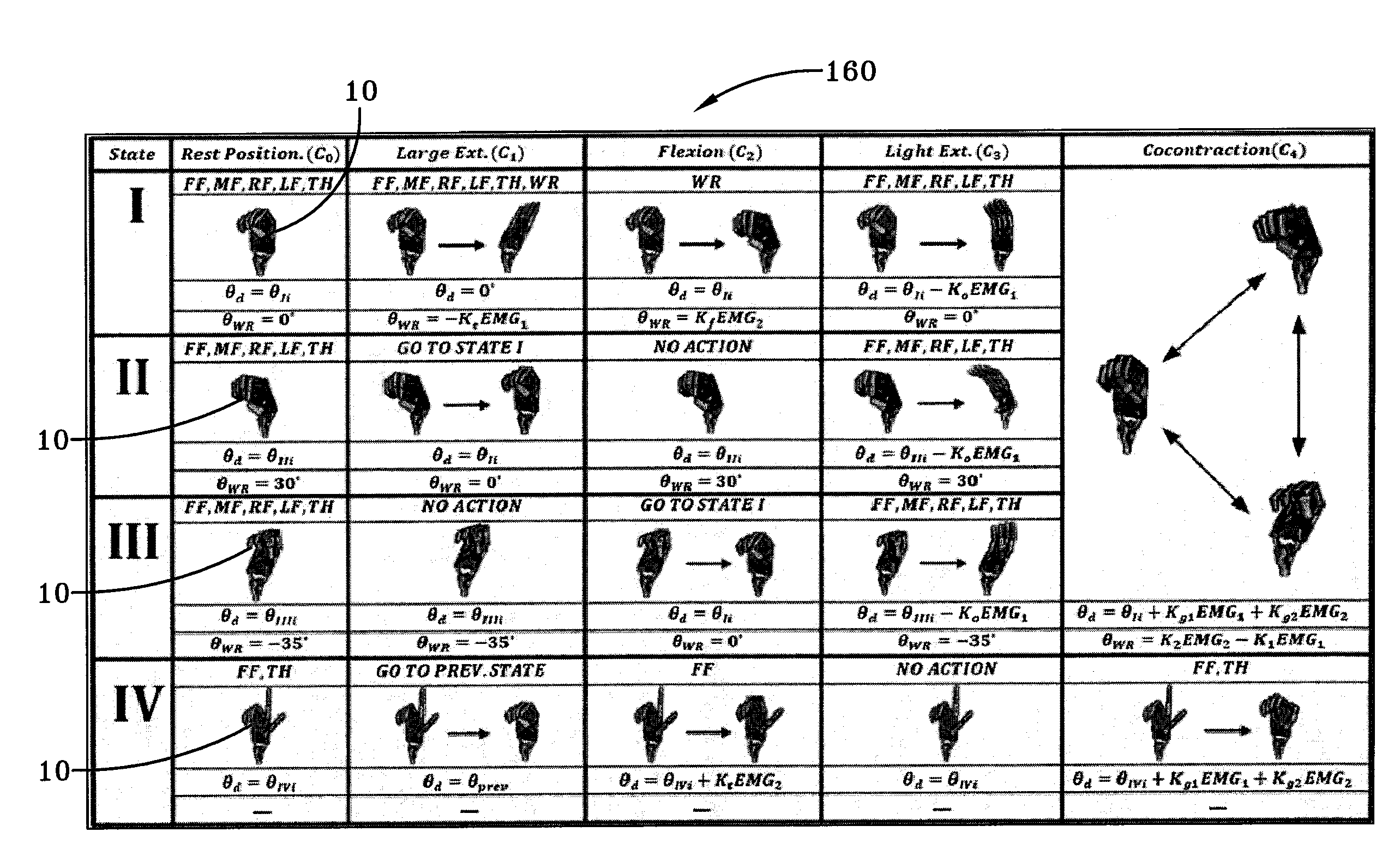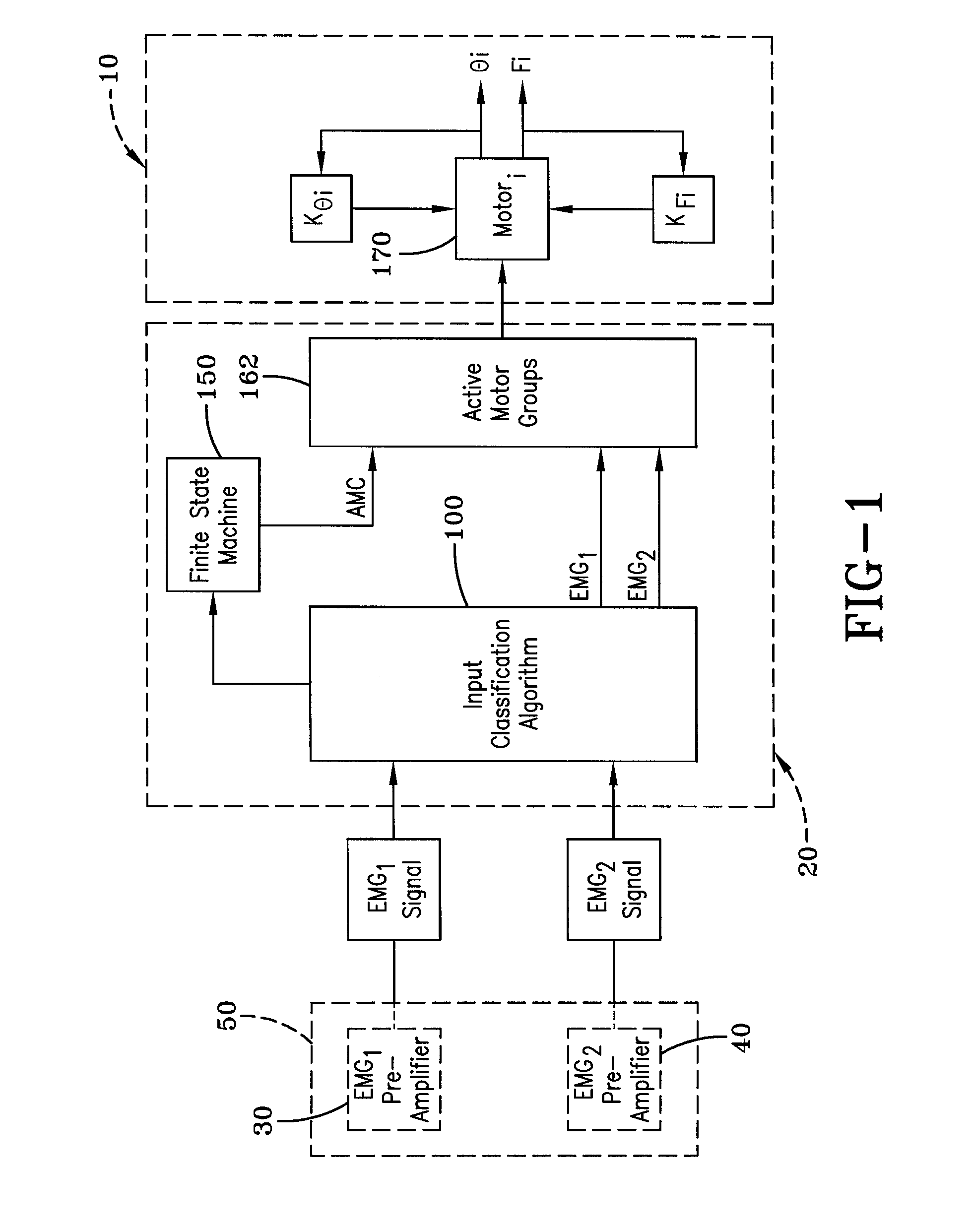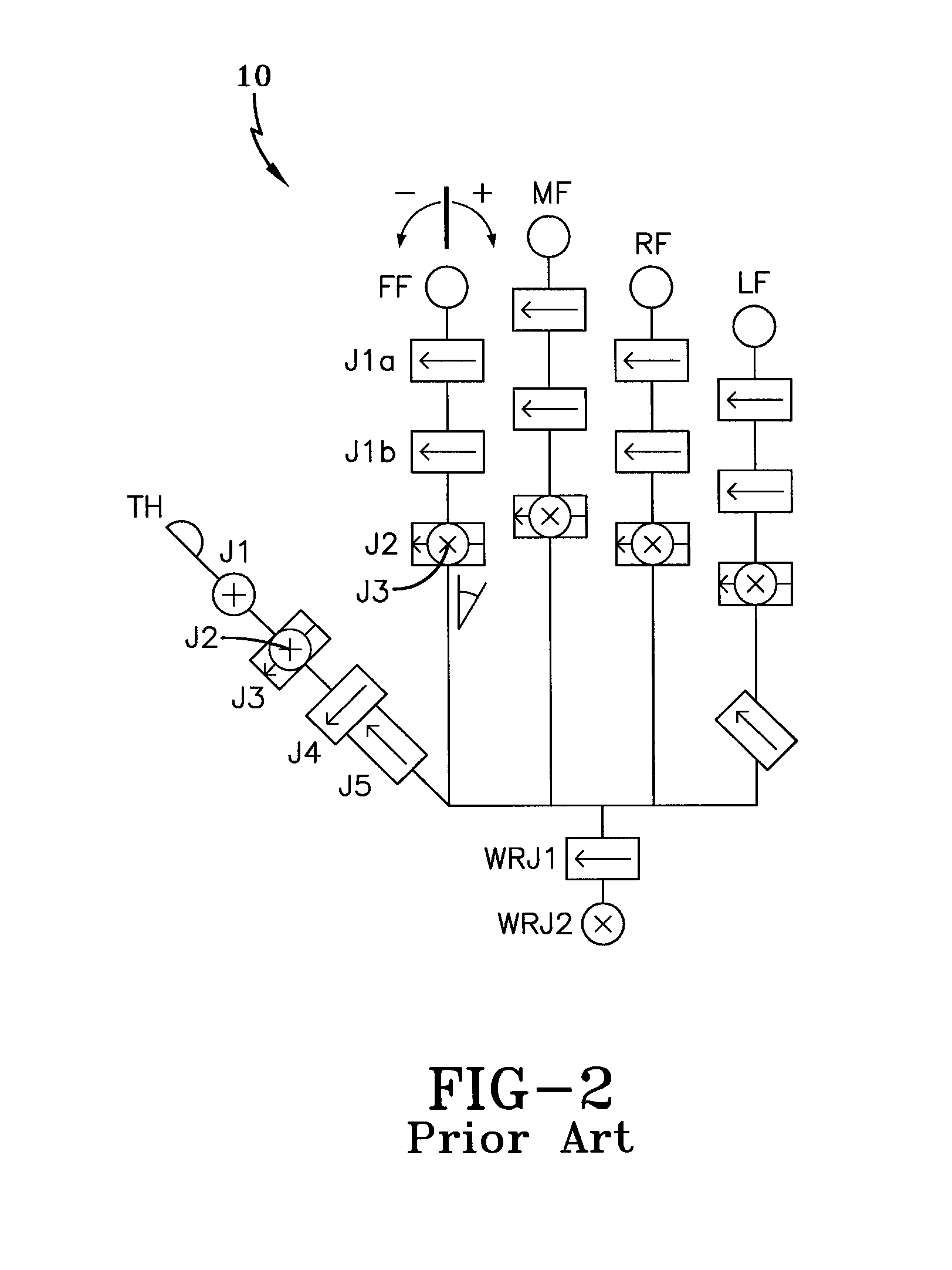Biomimetic controller for increased dexterity prosthesis
a biomimetic controller and prosthesis technology, applied in the field of prosthesis, can solve the problems of inability to provide the amputee with control over both position and force of the prosthesis, and few commercially available prosthesis devices
- Summary
- Abstract
- Description
- Claims
- Application Information
AI Technical Summary
Benefits of technology
Problems solved by technology
Method used
Image
Examples
Embodiment Construction
[0018]A biomimetic sliding mode (BSM) controller for use with a prosthetic device 10, such as a prosthetic hand, is generally referred to by numeral 20, as shown in FIG. 1 of the drawings. It should be appreciated that while the BSM controller 20 is discussed herein for use in controlling the prosthetic hand 10, the BSM controller 20 may be used to control any prosthesis or other electromechanical articulating apparatus, such as a robotic hand. Continuing, the prosthetic hand 10 may comprise any suitable prosthetic hand having at least two or more degrees of freedom (DOF). However, for the purposes of the following discussion, the prosthetic hand 10 comprises a SHADOW C6M motorized hand, manufactured by the Shadow Robot Company, in which its kinematic model is shown in FIG. 2. Specifically, the axes of rotation of the prosthetic hand 10 are identified as arrows, with axes of rotation perpendicular to the page being designated by an “X”. Specifically, the prosthetic hand 10 includes ...
PUM
 Login to View More
Login to View More Abstract
Description
Claims
Application Information
 Login to View More
Login to View More - R&D
- Intellectual Property
- Life Sciences
- Materials
- Tech Scout
- Unparalleled Data Quality
- Higher Quality Content
- 60% Fewer Hallucinations
Browse by: Latest US Patents, China's latest patents, Technical Efficacy Thesaurus, Application Domain, Technology Topic, Popular Technical Reports.
© 2025 PatSnap. All rights reserved.Legal|Privacy policy|Modern Slavery Act Transparency Statement|Sitemap|About US| Contact US: help@patsnap.com



